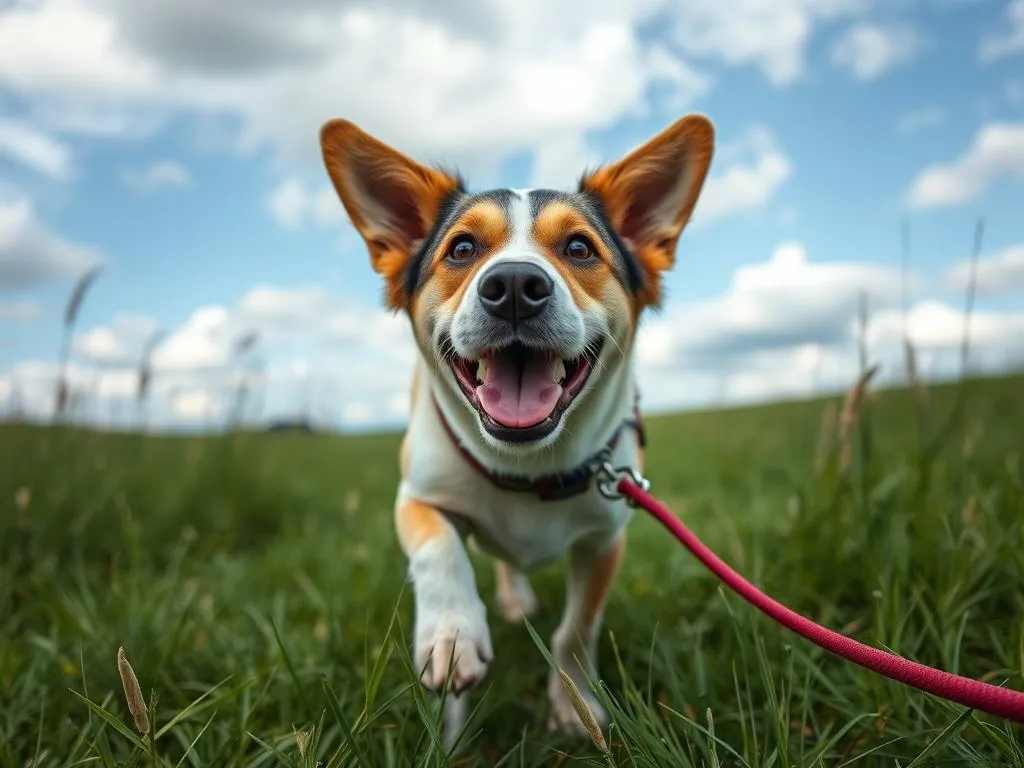
Dogs are incredible companions, but they can also be unpredictable. One of the most alarming situations for a dog owner is when their pet escapes from the leash. It’s essential to understand the potential risks and how to respond effectively. In this guide, you’ll find actionable steps to take if your dog gets off the leash, ensuring both your safety and that of your furry friend.
Understanding the Risks of a Dog Off Leash
Potential Dangers
When a dog escapes from its leash, the potential dangers are numerous and serious:
- Traffic accidents: One of the most immediate risks is the possibility of your dog running into traffic. This can lead to severe injuries or even death.
- Encounters with aggressive animals: An off-leash dog may come across other animals, leading to fights or aggressive encounters.
- Getting lost or injured: Once off-leash, dogs can wander away and become lost, or they may injure themselves while trying to escape.
Legal Implications
Many communities have leash laws in place. If your dog is found roaming off-leash, you could face:
- Fines or legal consequences: Depending on local laws, you may be subject to fines or even legal action if your dog causes harm or creates disturbances.
Emotional Impact
The emotional toll of a dog escaping can be profound:
- Stress for the owner: The panic and fear of not knowing where your dog is can be overwhelming.
- Anxiety for the dog: A dog that is off-leash can experience fear and anxiety, especially if they are in unfamiliar surroundings.
Immediate Actions to Take
Stay Calm
In a high-stress situation, your first priority should be to stay calm. This can be challenging, but keeping your composure is crucial for effective action.
- Importance of maintaining composure: Dogs can sense your anxiety, which may cause them to panic or run further away.
- Tips for staying calm: Take deep breaths, count to ten, and focus on your dog’s last known location.
Assess the Situation
Take a moment to assess the environment. Is it a busy street or a quiet park?
- Evaluate the environment: Understand the risks associated with your surroundings to decide on the best course of action.
- Observe the dog’s behavior: Is your dog playing, running around, or showing signs of fear? This can help you determine how to approach them.
Call Your Dog
Once you’ve assessed the situation, it’s time to call your dog. Use techniques that can effectively grab their attention.
- Techniques for effective recall: Use a cheerful tone and call their name, followed by commands like “come” or “here.”
- Use of treats or toys: If your dog is motivated by treats or favorite toys, show them to attract their attention.
Strategies for Recapturing Your Dog
Use of Commands
If your dog is familiar with basic commands, this can be your best advantage.
- Basic commands to use: Commands like “sit,” “stay,” and “come” can help guide your dog back to you.
- Importance of consistent training: Regular training reinforces these commands, making them more effective in high-stress situations.
Employing a Leash or Long Line
If you can approach your dog safely, consider using a leash or long line.
- How to safely approach and attach a leash: Approach calmly and avoid sudden movements that might startle your dog. If they’re nervous, crouch down and extend the leash towards them.
- Benefits of long lines for training: Long lines allow your dog more freedom while still keeping them under control, making them ideal for training in open areas.
Enlist Help from Bystanders
Don’t hesitate to enlist help from bystanders if needed.
- How to effectively ask for assistance: Politely ask people nearby if they can help you call your dog or block off areas to prevent them from running further away.
- Safety protocols when involving others: Ensure that anyone helping is calm and understands how to approach your dog, especially if they’re feeling scared or anxious.
Preventive Measures for the Future
Leash Training
Prevention is always better than cure. Focus on proper leash training techniques.
- Importance of proper leash training techniques: Teaching your dog to walk calmly on a leash can prevent future escapes.
- Recommended methods and tools: Consider using a harness or head collar for better control and comfort.
Socialization
Proper socialization is crucial for your dog’s behavior.
- Importance of socializing your dog with other animals and people: Well-socialized dogs are less likely to react fearfully or aggressively in new situations.
- Tips for safe socialization practices: Introduce your dog to new environments gradually and monitor their reactions.
Consider Alternative Control Methods
There are several alternative control methods that can enhance your dog’s safety.
- Use of GPS collars or tracking devices: These devices can help you locate your dog quickly if they escape.
- Training with invisible fences: Invisible fences can provide an additional layer of safety by keeping your dog within a designated area.
Understanding Your Dog’s Behavior
Common Reasons Dogs Escape
Understanding why dogs escape can help you prevent it in the future.
- Instinctual behavior: Dogs are natural explorers and may chase after prey or wander out of curiosity.
- Boredom or lack of exercise: A bored dog is more likely to seek out adventure, so ensure they are getting enough physical activity.
Signs of Anxiety or Fear
Recognizing signs of anxiety can be crucial for prevention.
- Behavioral cues that indicate stress: Look for signs such as excessive barking, pacing, or hiding.
- Strategies to reduce anxiety and prevent escapes: Create a safe and stimulating environment for your dog, using toys and activities to keep them engaged.
When to Seek Professional Help
Identifying Behavioral Issues
Sometimes, the best course of action is to seek professional help.
- Recognizing when a professional is needed: If your dog frequently escapes or exhibits aggressive behaviors, it may be time to consult a professional.
- Types of professionals: Consider reaching out to dog trainers, behaviorists, or veterinarians specializing in animal behavior.
Choosing a Trainer
Finding the right trainer can make all the difference.
- Tips for selecting a qualified dog trainer: Look for trainers with certifications and good reviews. Ask for references if possible.
- Questions to ask before hiring a trainer: Inquire about their training methods, experience, and how they handle behavioral issues.
Conclusion
Understanding what to do if your dog gets off leash is vital for every dog owner. By staying calm, assessing the situation, and employing effective strategies, you can minimize risks and safely recapture your dog. Remember the importance of prevention through proper training and socialization. Your furry friend’s safety is a reflection of your commitment as a responsible pet owner.
This guide serves as a comprehensive resource for both new and experienced dog owners, providing insights into managing leash escapes effectively. By implementing these strategies, you can foster a safer, more enjoyable experience for you and your dog.









